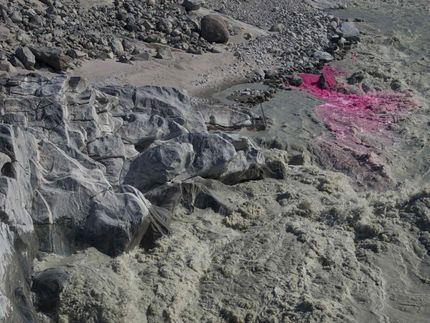Scientists develop new soil moisture sensor
Innovative measuring device enables the water content of biological soil crusts to be measured for the first time
Biological soil crusts comprising lichens, algae and mosses play an important role in the earth’s ecosystems. They fix carbon dioxide and nitrogen while giving off significant amounts of the greenhouse gas nitrous oxide. Information on soil moisture is of vital importance to investigate their fixation and release processes and to understand them in detail. Previously, no sensor existed that could measure the water content in the top millimeters of the soil with sufficient accuracy. This gap has now been closed by a new development of Bettina Weber and her colleagues at the Max Planck Institute for Chemistry in Mainz. They have managed to construct an appropriate soil moisture sensor, which delivers reliable data, as well as being cost-effective and flexible to use.
Up to now, the available methods were only moderately suited to at least approximately determine the water content within the top soil level. “The only sensor that can be used in the uppermost layer merely measures whether the organisms are active, but not the water content. All other soil moisture sensors measure the water content in deeper layers, making them totally unsuited for applications in biological soil crusts,” Bettina Weber, group leader in the Multiphase Chemistry department, describes the problem.
Because the soil moisture in the top five millimeters is essential for the activity, productivity and surface transfer rate of periodically wet organisms, however, Bettina Weber tried to determine this unknown factor by means of an own new development. Together with her research team, she found a method that enabled her to determine the soil moisture by means of its conductivity. The key component of the measuring device is thus a conductivity sensor.
The calibration of the sensors posed the biggest challenge: Because the conductivity of the soil is affected not only by its moisture, but also by factors such as its granularity and salt content, the sensors must always be calibrated within the substrate that is being measured. It was only after numerous attempts that the researchers were able to develop a reliable method that enabled them to assign the conductivity values to the corresponding water content values. “As it is really time-consuming to create calibration curves in the laboratory after the field measurements, we have also developed a method for creating a calibration curve that is slightly less accurate but requires fewer field measurements,” states Thomas Berkemeier, doctoral student in the Multiphase Chemistry department, who developed the mathematical approach for calculating the calibration curves.
As a whole, the new development of the Mainz scientists convinces due to its numerous advantages: Firstly, thanks to its simple structure and robust construction, the sensor can be deployed universally in all kinds of soils around the world. Secondly, the low acquisition costs make it possible to install multiple sensors simultaneously, allowing small-scale patterns and dependencies to be registered in a statistically reliable manner, something that wasn’t possible previously. With simple adjustments, the newly developed soil moisture sensors can be used for measurements over larger soil areas. This makes them potentially useful not only for research projects on biological soil crusts, but also for industrial applications, for instance in the processing of concrete.
The Max Planck scientists have obtained protection for their invention and have registered the moisture sensor as a utility patent. Currently, Bettina Weber is already working on a further development of the sensor, to make it ready for utilization in distributed sensor networks.
Original publication
Other news from the department science
These products might interest you
Most read news
More news from our other portals
See the theme worlds for related content
Topic world Sensor technology
Sensor technology has revolutionized the chemical industry by providing accurate, timely and reliable data across a wide range of processes. From monitoring critical parameters in production lines to early detection of potential malfunctions or hazards, sensors are the silent sentinels that ensure quality, efficiency and safety.

Topic world Sensor technology
Sensor technology has revolutionized the chemical industry by providing accurate, timely and reliable data across a wide range of processes. From monitoring critical parameters in production lines to early detection of potential malfunctions or hazards, sensors are the silent sentinels that ensure quality, efficiency and safety.
































































